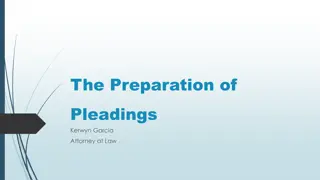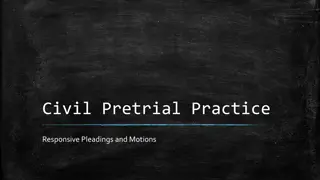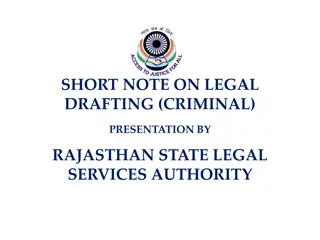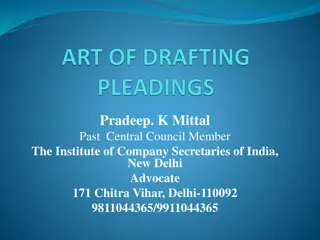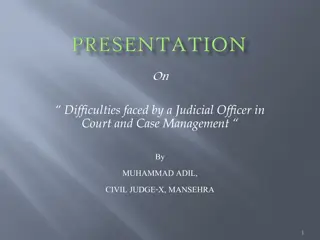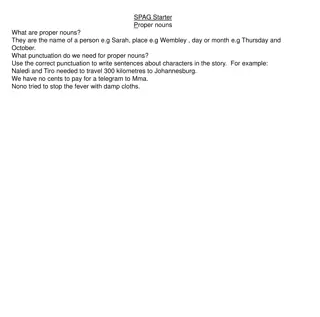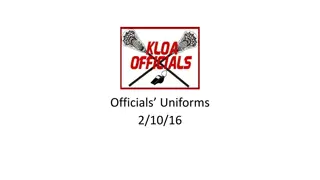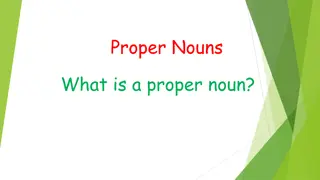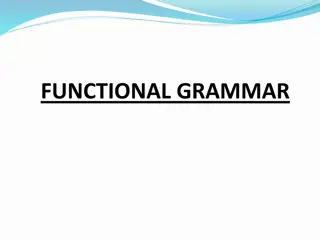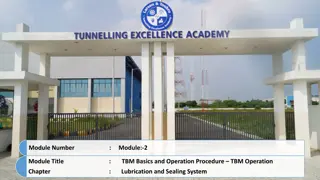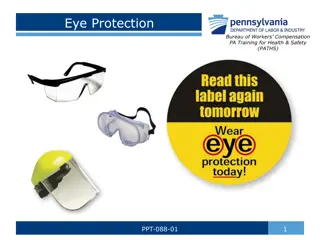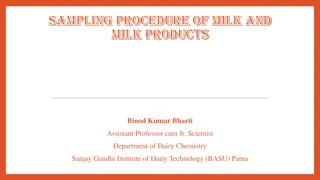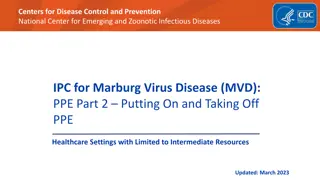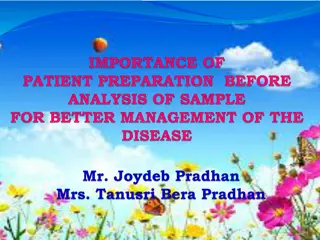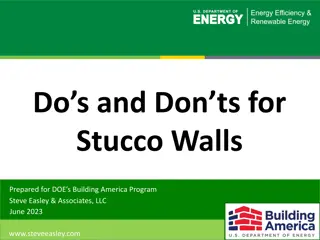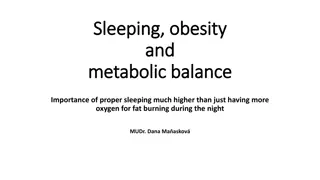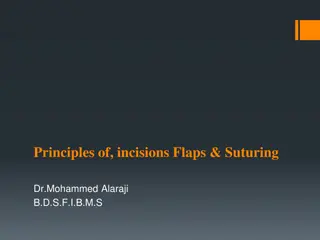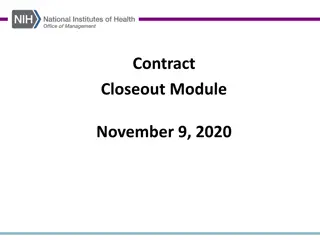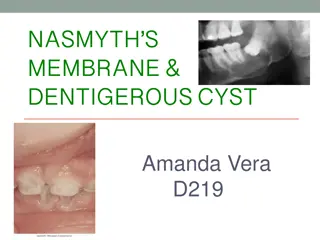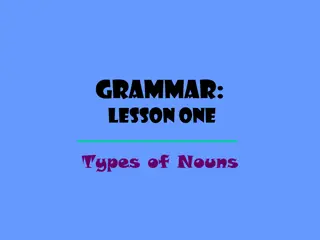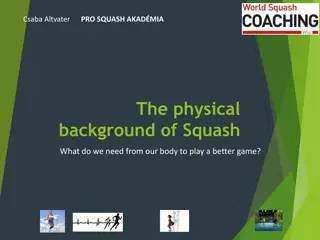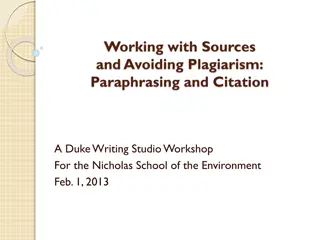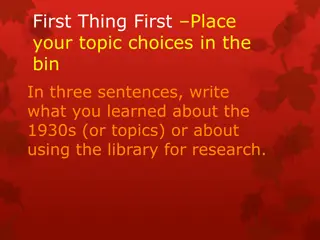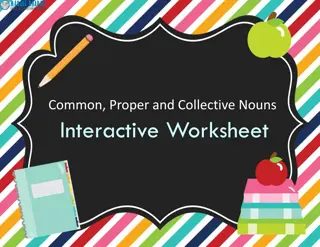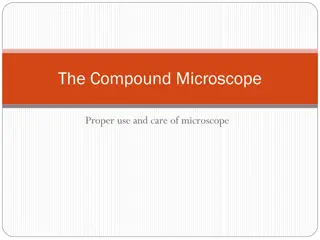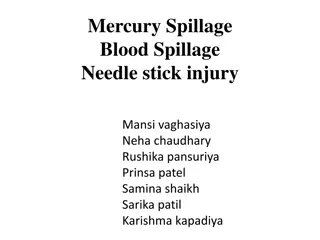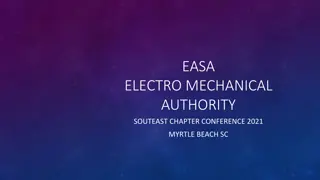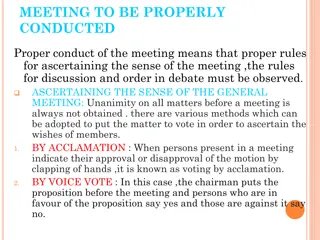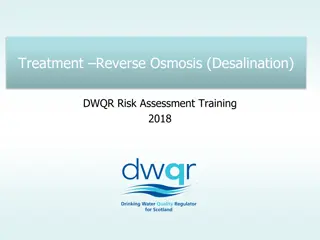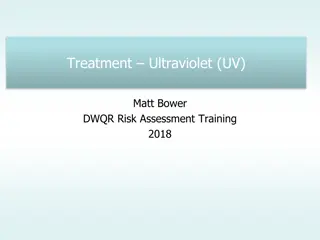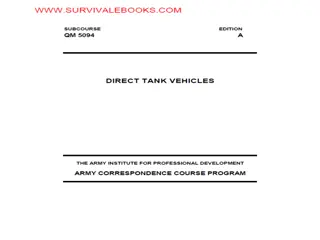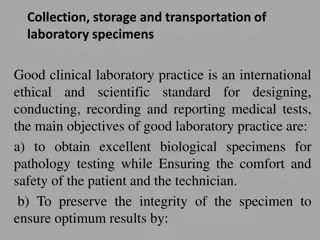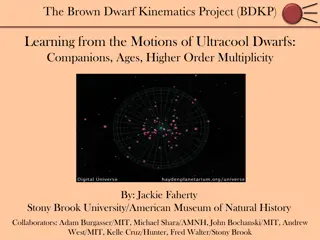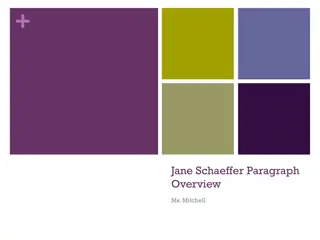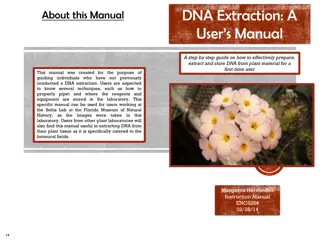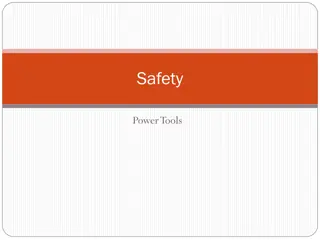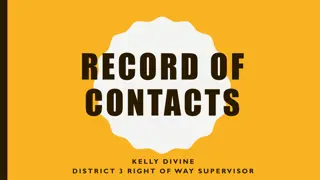Understanding the Importance of Proper Pleadings for Paralegals
Proper pleadings are crucial documents in litigation that outline facts and legal arguments. For paralegals, drafting accurate and concise pleadings is essential for a successful legal case. The value of proper pleadings lies in setting the groundwork for the trial, ensuring transparency, adhering to rules of conduct, and ultimately, serving the client's best interests.
Download Presentation

Please find below an Image/Link to download the presentation.
The content on the website is provided AS IS for your information and personal use only. It may not be sold, licensed, or shared on other websites without obtaining consent from the author. Download presentation by click this link. If you encounter any issues during the download, it is possible that the publisher has removed the file from their server.
E N D
Presentation Transcript
PLEADINGS Andrew Hyland, Horlick Levitt Di Lella LLP Kristina MacDonald, Pursuit Legal Services George Brown, George Brown Professional Corporation
What are pleadings? The core document(s) of a party to litigation in which the facts and supporting law are formally set out. Pleadings set the issues of litigation and the limits of what needs to be proved, and what is relevant Pleadings are essential to trial because they set out exactly what a litigant is asking a court or tribunal for.
What is the value of proper pleadings to paralegals?
What is the value of proper pleadings to paralegals? Paralegal Rules of Conduct Rules 4, 5, and 6 Rule 5:Reasonableness of a fee to be determined by Time and effort required and spent The difficulty of the matter and importance to our clients Whether special skill or service was required and provided The results obtained The experience and ability of the paralegal
Paralegal Rules of Conduct The rules draw a distinction between what time a task should take, and what it actually does Just because it takes 3 hours to draft a Plaintiff s Claim does not mean you get to charge for 3 hours Certain claims do not require any special skill over and above the usual skill to draft E.g. Fraudulent Misrepresentation vs. collection of a promissory note
Paralegal Rules of Conduct Rule 4 4.01(1) When acting as an advocate, the paralegal shall represent the client resolutely and honourably within the limits of the law while, at the same time, treating the tribunal and other licensees with candour, fairness, courtesy and respect.
Paralegal Rules of Conduct Rule 4 4.01(5) When acting as an advocate, the paralegal shall not (c) knowingly attempt to deceive a tribunal or influence the course of justice by offering false evidence, misstating facts or law, presenting or relying upon a false or deceptive affidavit, suppressing what ought to be disclosed, or otherwise assisting in any deception, crime, or illegal conduct
Paralegal Rules of Conduct Rule 4 4.01(5)(f) knowingly assert as true, a fact when its truth cannot be reasonably be supported by the evidence or as a matter of which notice may be taken by the tribunal. 4.01(5)(k) knowingly misrepresent the client s position in the litigation or the issues to be determined in the litigation
Paralegal Rules of Conduct Rule 6 6.01(1) A paralegal shall encourage public respect for, and try to improve, the administration of justice.
The Value of Pleadings The results we obtain are directly related to our competencies as a paralegal Bad pleadings will lead to bad results
Pleadings in the Small Claims Court Rule 7-Plaintiff s Claim (2)The following requirements apply to the claim: 1. It shall contain the following information in concise and non-technical language: i. The full names of the parties to the proceeding and, if relevant, the capacity in which they sue or are sued ii. The nature of the claim, with reasonable certainty and detail, including the date, place, and nature of the occurrences on which the claim is based iii. The amount of the claim and the relief requested .. 2. If the plaintiff s claim is based in whole or in part on a document, a copy of the document shall be attached to each copy of the claim, unless it is unavailable, in which case the claim shall state the reason why the document is not attached.
What Have We Learned So Far? 1. Don t use legalese (purple prose) Legal terms combined in long winded sentences, originally with the design of precision, but which add unnecessary complexity When you talk of a thing being deemed to be something, you do not mean to say that it is that which it is to be deemed to be. It is rather an admission that it is not what it is to be deemed to be, and that, notwithstanding it is not that particular thing, nevertheless it is to be deemed to be that thing (R. v. Norfolk(1891))
Legalese, cont This doesn t mean that sometimes you will not need to use a technical term or legal term in a pleading in order to get your message across, e.g. If you re going to claim set- off or promissory estoppel, write the words. However most legal terms have plain language equivalents Volenti non fit injuria=voluntary assumption of risk Inter alia=among other things Subsequent to=after
What have we learned? 2. Get to the point Pleadings should only be as long as they have to be, based upon the facts of the case, and the relevant legal issues. Pleadings which convey the story of the case in the least amount of words possible are favoured by the court. Long-winded pleadings will bore the court and obscure the issues. A judge/adjudicator should be able to have a working understanding of your case after the first reading, not the 10th.
What Have We Learned? 3. Know your case. Good pleadings will be able to lay out all the necessary elements to prove your case at trial Properly name your parties: If it is a corporation, do a profile search to determine the proper corporate name, and any trading names If it is a Sole Proprietorship, name both the owner and the operating name using c.o.b. or o/a (carrying on business as; operating as) Put aliases of the persons, if you know them
Know Your Case, cont Lay out all the material and relevant facts to your case These will help establish your cause of action, which is another way of saying the set of facts that enable your client to sue or get sued. You do not have to plead each any every thing that happened in your fact timeline. Plead the facts that support your case. Let s look at an example fact scenario
A Promissory Note Claim Stephen Parker loans Brian Eminovski $10,000.00 Stephen signs a piece of paper that says he will pay back the money in a year s time, plus 6% interest. The year rolls by, and Stephen doesn t pay Brian back the money. Stephen tells Brian it s because he s undergoing financial hardship.
Promissory Note, cont What are the relevant facts if you re the Plaintiff? When and what was given by Stephen to Brian When it was supposed to be paid back by. What the interest was That it was not paid back. If you re the Plaintiff, it s not relevant what the Defendant s reasons for not paying back the money was. That s the job of the defence to establish.
A basic claim for negligence On Canada Day, Sam goes out and gets drunk and gets into her car. In the course of driving drunk, she runs over Dave, who is crossing at the crosswalk. She ends up getting charged with drunk driving, and pleads guilty Dave spends a month in the hospital, and the doctors diagnose him with a broken leg. Dave spends six months off work rehabbing. Sam apologizes to Dave, and says that she got drunk that night as a result of a fight with her ex.
A basic Negligence Claim, con t What are the relevant and material facts That on Canada Day, Sam got drunk. That she ran over Andrew That she has been found criminally liable That Andrew had his leg broken That he spent six months off work rehabbing
Know your case, cont Know what the elements of your cause of action are. These need to be properly plead A claim for breach of contract will have at least the following three elements stated. 1. Offer 2. Acceptance 3. Consideration Torts have multiple elements Unjust enrichment has the following elements 1. That work or some other benefit was performed by the Plaintiff That the Defendant benefitted from it That there is no legal reason for the Plaintiff to be denied compensation for the benefit given/performed
What Have we Learned, cont 4. State your prayer for relief A prayer for relief is the paragraph where you set out the quantum (amount) of your claim, any interest, costs and fees, and any other relief It usually appears as the first paragraph of your claim, but it can appear as the final paragraph. It usually looks something like this
The Prayer for Relief 1.The Plaintiff claims as against the Defendant the following: (a) The amount of X; (b) Pre and Post Judgment interest persuant to the Courts of Justice Act, R.S.O. 1990, c.C.19 (c) Preparation fee pursuant to Rule 19.01(4) (d) The sum of $60.00 for service upon the Defendant (e) The costs of this action, together with any applicable Harmonized Sales Tax which may be payable (f) Representation fee persuant to Rule 19.04(1) (g) Such further and other relief has may be advised and this Honourable Court deems just.
The Prayer for Relief It s personally advisable to put the prayer at the very beginning. It lets the Court know immediately what your client wants The rest of the pleading becomes an explanation of why your client is entitled to the relief Putting the prayer first allows for you to explain your claim in an easier way than stating all the facts first and then asking for your relief later.
What Have We Learned So Far? 5. The Pleadings compel disclosure Pleadings compel the parties to disclose essential facts of the case. This is done so that parties are aware of the case (or defence) that they need to confront, and so that the court knows which matters are uncontested, and which need to be resolved via trial.
Pleadings compel disclosure The Small Claims Court does not have the same level of discovery as the other branches of Superior Court You cannot on motion ask for production of documents as a general rule The Court expects disclosure to be presented at the beginning of the case. These should be marked as either Exhibits or Schedules in your pleadings. Attached hereto and marked as Exhibit/Schedule X
Do Pleadings Have to be Perfect? Pleadings in the Small Claims Court do not have to be perfect, there is some leeway as compared to the other branches of Superior Court. In some cases, the Court has awarded relief on issues which came up before the Court at trial, but were not explicitly plead. However, this is not an excuse for sloppy or bad pleading
Consider these two cases With respect to the formalities required in pleadings in Small Claims Court Heeney, J. stated in 936464 Ontario Ltd. v. Mungo Bear Ltd. (2003) 2003 CanLII 72356 (ON SC), 74 O.R. (3d) 45 at para. 45:More important though is the fact that the case at bar was litigated in the Small Claims Court. The higher standards of pleading in the Superior Court are simply unworkable in a Small Claims Court, where litigants are routinely unrepresented, and where legal concepts such as the many varieties of cause of action are completely foreign to the parties. Essentially, the litigants present a set of facts to the Deputy Judge, it is left to the deputy judge to determine the legal issues that emerge from those facts and bring his or her legal experience to bear in resolving those issues. Hydro One Networks Inc. v. Yakeley, 2010 ONSC 4770 (CanLII)
It may be amongst self represented litigants it is too much to ask for proper pleadings [per 936464 Ontario Ltd. v Mungo Bear Ltd., 2003 CanLII 72356 (ON SC)] but lawyers and paralegals should be held to a higher standard, Small Claims Court action or not. Trapasso v. 241 Pizza (2006) Ltd., 2014 CanLII 56281 (ON SCSM)
What happens to bad pleadings? The Rule 12.02 motion Motion to Strike out or Amend a Document12.02 (1) The court may, on motion, strike out or amend all or part of any document that, (a) discloses no reasonable cause of action or defence; (b) may delay or make it difficult to have a fair trial; or (c) is inflammatory, a waste of time, a nuisance or an abuse of the court s process. (2) In connection with an order striking out or amending a document under subrule (1), the court may do one or more of the following: 1. In the case of a claim, order that the action be stayed or dismissed. 2. In the case of a defence, strike out the defence and grant judgment.2.1 In the case of a motion, order that the motion be stayed or dismissed.3. Impose such terms as are just.
Rule 12.02 Motions, cont (3) The court may, on its own initiative, make the order referred to in paragraph 1 of subrule (2) staying or dismissing an action, if the action appears on its face to be inflammatory, a waste of time, a nuisance or an abuse of the court s process
Rule 12.02 Motions Test The test for striking pleadings and dismissing claims in Small Claims Court is much lower than the test in the other branches of Superior Court The test, as developed, allows for the Court to strike out pleadings where there is no meaningful chance of success at trial . (compare with no genuine issue requiring a trial , the test for summary judgment in superior court)
CASE LAW-Rule 12.02 Motions O Brien v. Ottawa Hospital (Civic Campus) 2011 ONSC 231 (CanLII) R v. Fisher 2014 CanLII 61908 (ON SCSM) Trepanier v. Canada (Attorney General) 2014 CanLII 8968 Tuka v. Butt 2014 CanLII 7228 (ON SCSM)
Pleadings at the Landlord and Tenant Board
Pleadings at the LTB Notices of Termination are the functional equivalent of pleadings in civil court Less demanding in some respects, as not required to plead causes of action However, extremely reliant upon particulars Must be correct the first time around; there is no ability to amend a Notice of Termination once it is sent.
Residential Tenancies Act S.212: Substantial compliance with this Act respecting the contents of forms, notices, or documents is sufficient. What does this actually mean in practice?
Ball v. Metro Capital Property [2002] O. J. No 1747 A tenant needs to know the specific allegations against him/her in order to: Know the case that must be met; To decide whether or not to dispute the allegations; To consider whether to stop the conduct, activity, or correct the omission such that the notice becomes void (where applicable)
Particulars to be included The termination date, with the statutory minimum number of days provided Dates and times of alleged conduct Particulars of the alleged conduct Grounds for termination that are actually allowable under the RTA
Particulars in Notices of Termination Must not be confusing to such a degree that a reasonable person could not understand precisely what it means Uncertainty as to who is giving the Notice Vagaries as to the reasons for giving the Notice; General lack of particulars Must not mislead or misstate the law or the tenant s rights.
Kristinas section on Affidavits


